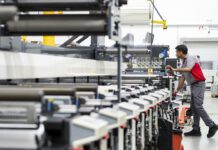Materials sorting expert Sesotec provides details of equipment specified for a new recycling facility

Around 20,000 tons of virgin PET is imported to New Zealand annually. The government’s Waste Minimisation Fund has provided a grant that has allowed Flight Group – a maker of timber and plastic products – to open New Zealand’s first PET recycling plant in Wellington and spend NZ$ 12 million (US$ 8.8 million) on further upgrades including a wash plant for PET bottles.
Keith Smith, CEO of Flight Plastics said the wash plant and other equipment at the facility allows his firm to produce thermoformed packaging from recycled PET bottles. The company installed extrusion equipment to use recycled PET flakes starting in 2014, using imported flake to prove the process and establish a customer base.
They had very encouraging results, said Smith, so the next step was to install their own wash plant. Flight Plastic has the capacity to recycle 6,000 metric tons of PET a year. It gets feedstock from kerbside collections around the nation, which collect about 8,000 tons annually.
Sorting bottles and flakes
As a part of the investment in a wash plant, Flight Plastics installed a multi-sensor sorting line including two bottle sorters and a flake sorter. These three systems secure the output quality as well as a continuous supply of PET flakes to the production line.
After the upstream process steps such as bale breaking, the bottles are fed to Sesotec‘s Varisort MN multi-sensor bottle sorting system. This system was installed for the separation of PET bottles from other polymers (using near-infrared sensors) as well as metals (using metal sensors). Flight Plastics also decided to install a further Varisort CN bottle-sorting system. This is equipped with colour sensors and near infrared sensors for material identification and it sorts as well as cleans the PET bottles into a transparent clear fraction and a coloured fraction. The sorted bottles are fed into a cutting mill where they are cut to the desired flake size and passed through a washing and drying process. In the next step Sesotec‘s Flake Purifier multi-sensor-sorting-system is used for a final cleaning of the PET flakes. Here the remaining off-colours, wrong polymers and small sized metal pieces are removed. This multi-sensor configuration equipped with a high resolution out-blast system allows highest possible sorting efficiency combined with lowest possible material loss rates, claims Sesotec. Depending on the application the three sensors can be used individually or in combination.






